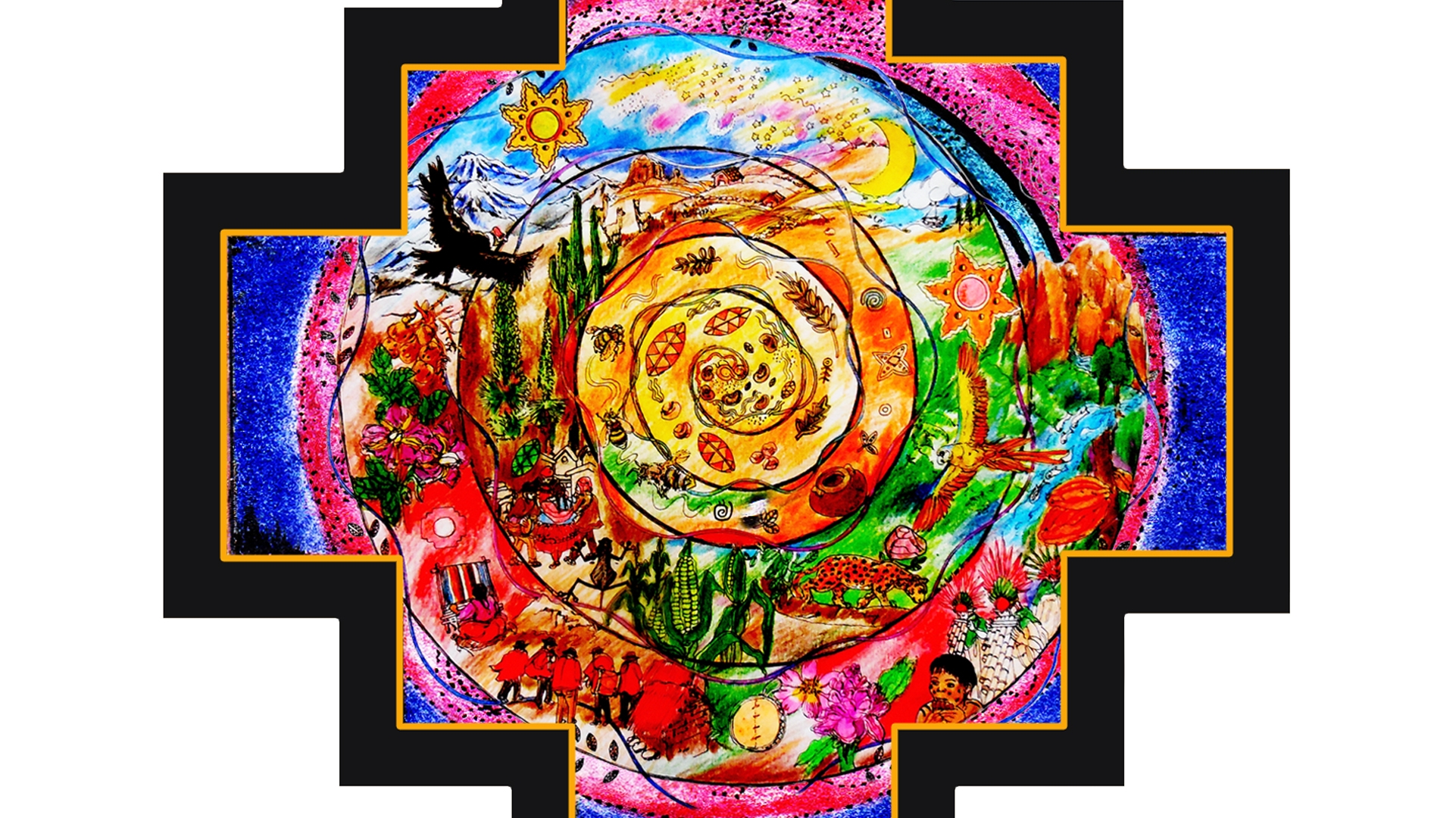My thought exploration is posited on The Sacred Principle - the tenet of respecting and revering all of nature and creation as sacred as a starting point.
But I have recently been engaged in conversations and reading that are pulling me to explore sacred principles -- those values and beliefs of Indigenous communities and world religions that have universal, timeless wisdom.
So here is a collection of some of those sets of beliefs and value systems that speak to me and feel interconnected. Included here without assigning priority, judgement or analysis.
Andean cosmovision
In the Andes, the Inca had three laws: Ama sua. Ama llulla. Ama quella. Do not steal, Do not lie, Do not be lazy. Of course the cosmovision is much more complex, with the concepts of ayni (reciprocity) as a Golden Rule and ayllu (community) as an organizing principle. A deeply held belief of Andean people is that we are all children of Pachamama, Mother Nature, and owe her our deep respect and reverence. In the past decade or so, a political/judicial version has emerged called Sumaq Kawsay or Allin Kawsay, translated to Buen Vivir or Good living, and meaning, life in all its plenitude. Though controversial in its application to modern legal systems and politics, the basic ethical dimension is synthesized into the four dimensions represented in the Andean chacana (cross): munay (care, compassion), yachay (wisdom, learning), llankay (productive work, contribution) or ruray (experiment, create) and uchay (vitality, capacity, governance). From the balance of these four dimensions come the key principles of Sumaq Kawsay: reciprocity, integralism, complementarity, and relationship. (see Chakana, Carlos de la Torre, 2000 and El Sumaq Kawsay, Luis Macas, 2010, in Yachaykuna Magazine). Another author (and Ecuatorian Congressperson) lists Sumak Kawsay values as: 'support' (yanapana), generosity (kuna), the obligation to receive (japina), reciprocity (kunakuna), advice (kamachi) and 'listening' (uyana) (Viteri, Carlos (2003). Súmak Káusai. Una respuesta viable al desarrollo).

The Chakana is a complex synthesis of the Andean cosmovision or cosmo-sensation. Image from Amerindiaenlared.
Tibetan Buddhism
A similar set of principles coming from mountain heights is the Tibetan Buddhist Philosophy of Life. These virtues are: Pāramitās (perfections) – Dāna (generosity), Sīla (proper conduct), Nekkhamma (renunciation), Paññā (wisdom), Viriya (energy), Khanti (patience), Sacca (honesty), Adhiṭṭhāna (determination), Mettā (Good-Will), Upekkhā (equanimity). Tibetan Buddhists consider these "medicine" for the five ills: ego, attachment, ignorance, anger and envy.
Christian Bible verses
Many of these virtues are also familiar to Christians, who have heard the Biblical quote: "But the fruit of the Spirit is love, joy, peace, forbearance, kindness, goodness, faithfulness, gentleness and self-control. Against such things there is no law" (Galations 5: 22-23). And, of course, the Golden Rule of "love your neighbor as yourself" (Mark 12:31).
Unitarian Universalist Principles
The Unitarian Universalist community -- neither a philosophy nor a religion -- has established a set of eight principles, drawn from world religions, spirituality, poetry, science and personal experience.
- The inherent worth and dignity of every person;
- Justice, equity and compassion in human relations;
- Acceptance of one another and encouragement to spiritual growth in our congregations;
- A free and responsible search for truth and meaning;
- The right of conscience and the use of the democratic process within our congregations and in society at large;
- The goal of world community with peace, liberty, and justice for all;
- Respect for the interdependent web of all existence of which we are a part.
- Working to build a diverse multicultural Beloved Community by our actions that accountably dismantle racism and other oppressions in ourselves and our institutions.
Living Systems - Regenerative Design
With a hearty set of lineages ranging from science to systems theory to ancestral wisdom, regenerative design is based on the principle that organizations are living systems. As such, they share these common features modeled by nature (articulated by nRhythm):
Developmental - constant growth and change
Nodal - decentralized and distributed
Evolutionary - dynamic balance
Uniqueness - each member bring unique genius
Interdependence - diversity, complexity and value of all relations
Holism - view system as a whole
Shared principles, shared fate
Other world religions, belief systems, and philosophies surely have additional similar values that we could include. And clearly, others have done much deeper and more extensive work on this issue. But this post serves as a starting point to document some examples that have been particularly poignant in my own process and that I hope to integrate into work I am doing around food system regeneration.
The confluence of these values, virtues and principles reminds us that humanity has a common origin and shared experience. And, given that we have a shared fate, it would be in all of our interest to explore how we are living out these Sacred Principles.
Comments
Post a Comment